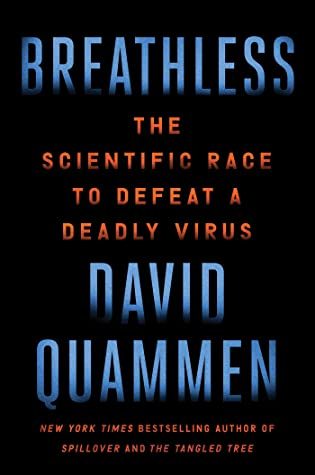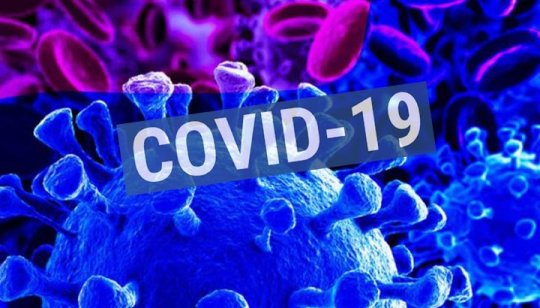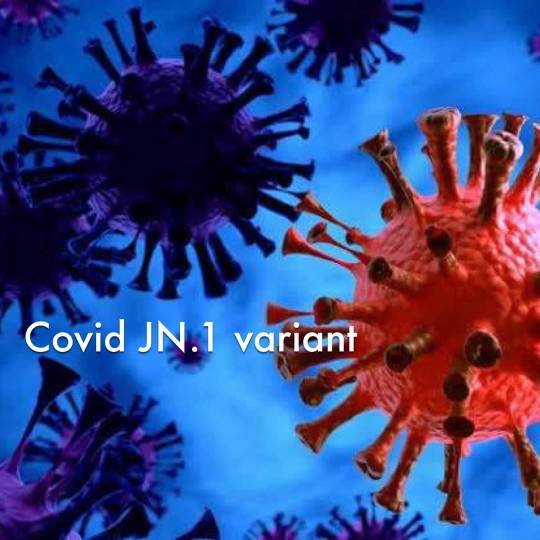#new variant of coronavirus in china
Text
Dr Rayan Cole MD sur les injections expérimentales ..
"Les vaccins n'ont jamais été reformulés, ils ont été fabriqués pour le covid de Wuhan, Omicron est arrivé, les vaccins sont maintenant tous risques, aucuns bénéfices."
#france#dictature sanitaire#covid 19#covidー19#europe#covid news#covid virus#corona news#pandemi virus corona#corona vaccine#wuhan coronavirus#wuhan#wuhan china#wuhan covid#stop covid 19#covid vaccine#covid#omicrom variant#omicron
2 notes
·
View notes
Text
CoronaVirus:कोरोना वायरस से चीन के हालात बिगड़े,भारत सतर्क
CoronaVirus:कोरोना वायरस से चीन के हालात बिगड़े,भारत सतर्क
नई दिल्ली:अपने पहले और दूसरे दौर में तबाही मचाने के बाद चीन में कोरोना(CoronaVirus)के नए वैरिएंट BF.7 से संक्रमण के मामलों में हो रही बेतहाशा बढ़ोतरी को देखते हुए भारत सरकार भी सतर्क हो गई और इस महामारी से निपटने के लिए राज्य सरकार को भी दिशा-निर्देश जारी किया गया है.चीन में कोरोना(CoronaVirus) से हालात बिगड़ते जा रहे हैं. जीरो-कोविड पॉलिसी खत्म होने के बाद वहां कोरोना के मामलों में भारी इजाफा हो…

View On WordPress
#bf.7 coronavirus#bf.7 variant#bf7#china#china covid news#china news#corona news#coronavirus bf 7#coronavirus india#covid 19coronavirus update#covid cases in china#covid cases in india#covid cases in india in last 24 hours#covid casesworldometer#covid india#covid update#covid variantbf.7#Covid-19#covidcorona cases in india#covidcoronavirus newschina#finlandcorona#nepalcovid 19#todaychina covid cases#variantomicron bf.7
0 notes
Text
“Alarming COVID -19 Situation in China Govt must suspend all flights” Congress leader Manish Tewari
Covid-19 cases are again surging in China, and WHO has expressed its concerns. Amid the information, Congress leader Manish Tewari has urged the government to suspend all flights coming in and going out of the country as soon as possible. “Given the alarming COVID -19 Situation in China Govt must suspend all flights to and from China ASAP. Given the spike in the US, Japan & South Korea & possibility of a new lethal variant emerging India should consider reintroducing COVID-19 protocols", tweeted the Congress leader.
Apollo Hospitals Managing Director Dr. Sangita Reddy has also asked the government to act quickly to the situation and re-establish policy regarding air travel to and from China.
“Given India's extensive Covid Vaccines drive with effective vaccines there is no need for public panic on the surge in COVID-19 cases in China. However, having said that there is no place for inertia. We must act swiftly on our policy regarding air travel to & from China," Dr. Reddy tweeted.
Earlier, Covid data analyst Vijayan expressed his thoughts on the situation and said that India must not fear the outbreak in China as the variants currently found in the country are Omicron Sublineages BA.2.75, BA.5, BQ.1, XBB all these variants have been found in rest of world.
A meeting was held by the union Health minister with a team of experts in Delhi. secretaries of health and Ayush ministries, the Department of Pharmaceuticals and Department of Biotechnology, Indian Council of Medical Research (ICMR) Director General Rajiv Bahl, Member (Health) of NITI Aayog V K Paul and National Technical Advisory Group on Immunization (NTAGI) Chairman N L Arora and other senior officials were also in attendance.
For more national news India in Hindi, subscribe to our newsletter.
#werindia#leading india news source#top news today#top news headlines#india fights corona#coronavirus variants#corona update#china covid
1 note
·
View note
Text
China Covid News: चीन में लगा लाशों का अंबार पर अभी नहीं थमने वाली कोरोना की तबाही, तीन नई लहरों से नए साल में मंजर होगा दर्दनाक!
China Covid News: चीन में लगा लाशों का अंबार पर अभी नहीं थमने वाली कोरोना की तबाही, तीन नई लहरों से नए साल में मंजर होगा दर्दनाक!
हाइलाइट्स
चीनीी अस्पताल कोविड-19 के मरीजों से भरे हुए हैं और लाशों का अंबार लगा है
कुछ दिनों में ��ेश में कोविड की तीन नई लहर आने वाली हैं
इन लहरों की वजह से देश का पूरा हेल्थ सिस्टम टूट सकता है
बीजिंग: चीन में विरोध प्रदर्शनों के बाद राष्ट्रपति शी जिनपिंग ने लॉकडाउन को हटाने और जीरो कोविड नीति में ढील देने का फैसला किया था। इसके बाद देश में स्थितियां बेकाबू हो गई हैं। अस्पताल कोविड-19 के…

View On WordPress
#china china covid vaccine#china coronavirus news#china coronavirus news in hindi#china coronavirus variant#china covid cases#china Headlines#china News#china News in Hindi#Latest china News
0 notes
Text
चीन के कोरोना वेरिएंट और ओमिक्रॉन XE से कोविड म्यूटेशन पर बढ़ी चिंता, एक्सपर्ट ने खतरे को लेकर किया आगाह
चीन के कोरोना वेरिएंट और ओमिक्रॉन XE से कोविड म्यूटेशन पर बढ़ी चिंता, एक्सपर्ट ने खतरे को लेकर किया आगाह
नई दिल्ली. चीन में उभर रहे नए कोविड वेरिएंट के सामने आने और ब्रिटेन में संभावित रूप से अधिक तेजी से फैलने वाले स्ट्रेन के बढ़ने से वायरस के चल रहे खतरे पर फिर से सबों का ध्यान केंद्रित हो गया है. ठीक इसी वक्त स्वास्थ्य विशेषज्ञों का कहना है कि घबराने की कोई वजह नहीं है.
विश्व स्वास्थ्य संगठन ने कहा कि ओमिक्रॉन के दो वेरिएंट्स – BA.1 और BA.2 – के म्यूटेशन से बना एक हाईब्रिड स्ट्रेन जिसे पहली बार…
View On WordPress
#China Corona Update#China Coronavirus Variants#Corona Mutation Omicron XE#Covid Mutations News#Omicron XE Vriant#कोरोना ओमिक्रॉन एक्सई#कोविड म्यूटेशन#चीन कोरोना वेरिएंट#वुहान कोरोना वेरिएंट
0 notes
Text
The concentration of a virus in wastewater can paint a picture of how much COVID-19 is present in that community. Testing at airports can help provide context for how prevalent the virus is among international travelers, and provide clues as to what new variants are emerging.
Within the last week, the Center for Disease Control announced it is considering use of wastewater testing at airports, mainly on incoming international flights, to track any emerging new variants as COVID-19 surges in China. Health officials in Australia and the United Kingdom announced similar plans. {read}
179 notes
·
View notes
Text
The World Health Organization on Friday said it was downgrading COVID-19 and no longer characterizing it as a global health emergency.
The U.N. health agency first declared the coronavirus to be an international crisis on Jan. 30, 2020.
WHO Director-General Dr. Tedros Adhanom Ghebreyesus announced the change during a media briefing held with reporters at the agency's headquarters in Geneva, Switzerland.
But he clarified that this does not mean the pandemic is over.
"It is with great hope that I declare COVID-19 over as a global health emergency," he said. "However, that does not mean COVID-19 is over as a global health threat. Last week, COVID-19 claimed a life every three minutes -- and that's just the deaths we know about."
The downgrade comes with the pandemic on a "downward trend" for more than a year due to growing immunity among the global population -- both from vaccination and infection -- as well as a decreasing number of deaths, according to Tedros. This has also led to health systems no longer feeling as a much of a burden as they once did.
"This trend has allowed most countries to return to life as we knew it before," he said.
Tedros recounted the early days of the pandemic, noting that when it first declared COVID-19 to be a public health emergency, China reported fewer than 100 cases and no deaths.
He said that 7 million COVID-19 deaths have been reported to WHO, but officials believe the true toll to be at least 20 million. In the U.S., more than 1.1 million deaths have been recorded, according to data from the Centers for Disease Control and Prevention.
"But COVID-19 has been so much more than a health crisis," Tedros said. "It has caused severe economic upheaval, erasing trillions from GDP, disrupting travel and trade, shuttering businesses and plunging millions into poverty."
He continued, "It has caused severe social upheaval, with borders closed, movement restricted, schools shut and millions of people experiencing loneliness, isolation, anxiety and depression."
And despite the downgrade, there are still thousands of people dying every day as well as being hospitalized due to complications from the virus.
Tedros warned against countries letting their guard down and said they must remain vigilant in case a new highly infectious variant emerges.
"I emphasize that this is not a snap decision. It is a decision that has been considered carefully for some time, planned for, and made on the basis of a careful analysis of the data," he said. "If need be, I will not hesitate to convene another Emergency Committee should COVID-19 once again put our world in peril."
17 notes
·
View notes
Photo





National Book Award Finalists: Nonfiction
Have you read any of these National Book Award Finalists? These nonfiction selections were chosen out of 607 submissions! There are also finalists for fiction, poetry, translated literature, and young people's literature - be sure to check out the full list here.
The Invisible Kingdom by Meghan O’Rourke
A silent epidemic of chronic illnesses afflicts tens of millions of Americans: these are diseases that are poorly understood, frequently marginalized, and can go undiagnosed and unrecognized altogether. Renowned writer Meghan O’Rourke delivers a revelatory investigation into this elusive category of “invisible” illness that encompasses autoimmune diseases, post-treatment Lyme disease syndrome, and now long COVID, synthesizing the personal and the universal to help all of us through this new frontier.
Drawing on her own medical experiences as well as a decade of interviews with doctors, patients, researchers, and public health experts, O’Rourke traces the history of Western definitions of illness, and reveals how inherited ideas of cause, diagnosis, and treatment have led us to ignore a host of hard-to-understand medical conditions, ones that resist easy description or simple cures. And as America faces this health crisis of extraordinary proportions, the populations most likely to be neglected by our institutions include women, the working class, and people of color.
South to America by Imani Perry
We all think we know the South. Even those who have never lived there can rattle off a list of signifiers: the Civil War, Gone with the Wind, the Ku Klux Klan, plantations, football, Jim Crow, slavery. But the idiosyncrasies, dispositions, and habits of the region are stranger and more complex than much of the country tends to acknowledge. In South to America, Imani Perry shows that the meaning of American is inextricably linked with the South, and that our understanding of its history and culture is the key to understanding the nation as a whole.
This is the story of a Black woman and native Alabaman returning to the region she has always called home and considering it with fresh eyes. Her journey is full of detours, deep dives, and surprising encounters with places and people. She renders Southerners from all walks of life with sensitivity and honesty, sharing her thoughts about a troubling history and the ritual humiliations and joys that characterize so much of Southern life. Weaving together stories of immigrant communities, contemporary artists, exploitative opportunists, enslaved peoples, unsung heroes, her own ancestors, and her lived experiences, Imani Perry crafts a tapestry unlike any other.
Breathless by David Quammen
Breathless is the story of SARS-CoV-2 and its fierce journey through the human population, as seen by the scientists who study its origin, its ever-changing nature, and its capacity to kill us. David Quammen expertly shows how strange new viruses emerge from animals into humans as we disrupt wild ecosystems, and how those viruses adapt to their human hosts, sometimes causing global catastrophe. He explains why this coronavirus will probably be a “forever virus,” destined to circulate among humans and bedevil us endlessly, in one variant form or another. As scientists labor to catch it, comprehend it, and control it, with their high-tech tools and methods, the virus finds ways of escape.
Based on interviews with nearly one hundred scientists, including leading virologists in China and around the world, Quammen explains that infectious disease experts saw this pandemic coming; some scientists, for more than two decades, warned that “the next big one” would be caused by a changeable new virus - very possibly a coronavirus - but such warnings were ignored for political or economic reasons; the precise origins of this virus may not be known for years, but some clues are compelling, and some suppositions can be dismissed; and much more.
The Man Who Could Move Clouds by Ingrid Rojas Contreras
For Ingrid Rojas Contreras, magic runs in the family. Raised amid the political violence of 1980s and '90s Colombia, in a house bustling with her mother's fortune-telling clients, she was a hard child to surprise. Her maternal grandfather, Nono, was a renowned curandero, a community healer gifted with what the family called "the secrets" - the power to talk to the dead, tell the future, treat the sick, and move the clouds. And as the first woman to inherit "the secrets," Rojas Contreras' mother was just as powerful. Mami delighted in her ability to appear in two places at once, and she could cast out even the most persistent spirits with nothing more than a glass of water.
This legacy had always felt like it belonged to her mother and grandfather, until, while living in the U.S. in her twenties, Rojas Contreras suffered a head injury that left her with amnesia. As she regained partial memory, her family was excited to tell her that this had happened before: Decades ago Mami had taken a fall that left her with amnesia, too. And when she recovered, she had gained access to "the secrets."
In 2012, spurred by a shared dream among Mami and her sisters, and her own powerful urge to relearn her family history in the aftermath of her memory loss, Rojas Contreras joins her mother on a journey to Colombia to disinter Nono's remains. With Mami as her unpredictable, stubborn, and often hilarious guide, Rojas Contreras traces her lineage back to her Indigenous and Spanish roots, uncovering the violent and rigid colonial narrative that would eventually break her mestizo family into two camps: those who believe "the secrets" are a gift, and those who are convinced they are a curse.
His Name is George Floyd by Robert Samuels & Toluse Olorunnipa
The events of that day are now tragically familiar: on May 25, 2020, George Floyd became the latest Black person to die at the hands of the police, murdered outside of a Minneapolis convenience store by white officer Derek Chauvin. The video recording of his death set off a series of protests in the United States and around the world, awakening millions to the dire need for reimagining this country's broken systems of policing. But behind a face that would be graffitied onto countless murals, and a name that has become synonymous with civil rights, there is the reality of one man's stolen life: a life beset by suffocating systemic pressures that ultimately proved inescapable.
This biography of George Floyd shows the athletic young boy raised in the projects of Houston's Third Ward who would become a father, a partner, a friend, and a man constantly in search of a better life. In retracing Floyd's story, Washington Post reporters Robert Samuels and Toluse Olorunnipa bring to light the determination Floyd carried as he faced the relentless struggle to survive as a Black man in America. Placing his narrative within the larger context of America's deeply troubled history of institutional racism, His Name Is George Floyd examines the Floyd family's roots in slavery and sharecropping, the segregation of his Houston schools, the overpolicing of his communities, the devastating snares of the prison system, and his attempts to break free from drug dependence - putting today's inequality into uniquely human terms. Drawing upon hundreds of interviews and extensive original reporting, Samuels and Olorunnipa offer a poignant and moving exploration of George Floyd's America, revealing how a man who simply wanted to breathe ended up touching the world.
#nonfiction#nonfiction books#nonfiction reads#national book award#tbr#TBR pile#to read#book recommendations#books recs#reading recommendations#reading recs#library books#booklr#book tumblr
19 notes
·
View notes
Text
EU nations on Wednesday were finalizing a joint response to China's COVID-19 crisis.
Over the past week, member states have been implementing their own restrictions on travelers arriving from China.
Reactions to restrictions on visitors from China
Beijing has slammed the new rules, such as testing requirements in Italy and France, as "discriminatory" and vowed to impose countermeasures. As the EU was fine-tuning its approach, Chinese government spokesperson Mao Ning said: "We sincerely hope that all parties will focus on fighting the epidemic itself, avoid the politicization of COVID.''
Medical groups and airlines have also complained that the disjointed approach is untenable. International Air Transport Association Director General Willie Walsh said that it was "extremely disappointing to see this knee-jerk reinstatement of measures that have proven ineffective over the last three years."
"Research undertaken around the arrival of the omicron variant concluded that putting barriers in the way of travel made no difference to the peak spread of infections. At most, restrictions delayed that peak by a few days," he said.
Some EU health officials have also noted that the variants now heavily affecting China have already been present in Europe for sometime.
Despite this, the European Union appeared determined to impose some sort of restriction. Sweden, which currently holds the rotating EU presidency, issued a statement saying that "travelers from China need to be prepared for decisions being taken at short notice.''
On a trip to Portugal, German Foreign Minister Annalena Baerbock said it was essential for the EU to have a united response to China's unprecendented wave of infections.
What is the current COVID-19 situation in China?
In December, China became one of the last countries on Earth to drop its "zero-COVID" policy, which had been in place since the pandemic began in 2020. The policy became known for its extremely strict quarantines, often of entire neighborhoods or cities. The administration of Premier Xi Jinping finally dropped the plan after nationwide protests throughout the fall, resulting in soaring numbers of infections and deaths.
After the initial wave began, China announced that it would be counting cases and fatalities differently, resulting in data that international health officials have criticized as opaque.
Dr. Deepti Gurdasani, a UK-based expert on epidemiology and global health, told DW that "in a global crisis, we need rapid sharing of information. And, without that, it's very hard for us to sort of respond globally in a coordinated manner."
She said she didn't think that the European Union's current patchwork approach would do much good. "I think while it's really important to surveil the variants that might be emerging or growing within China, this sort of patchy pre-departure testing is unlikely to make a difference in terms of slowing the import of any new variant unless there are also domestic measures in place," he said.
Gurdasani also said that, with Lunar New Year approaching, the spread of COVID-19 across China and the emergence of new variants is highly likely.
WHO calls for transparency from Beijing
Also on Wednesday, the World Health Organization (WHO) criticized Beijing's "very narrow" definition of COVID deaths, which does not include people who die of COVID alongside another underlying condition. It also only allows for a death to be listed as caused by the coronavirus if the person died of respiratory failure, despite scientists know that COVID-19 has many other symptoms. Therefore, only 22 deaths have been registered since early December.
"We believe that the current numbers being published from China under-represent the true impact of the disease in terms of hospital admissions, in terms of ICU admissions, and particularly in terms of deaths," WHO emergencies director Michael Ryan told reporters.
WHO chief Tedros Adhanom Ghebreyesus said that his team was conducting talks with their counterparts in Beijing
"We continue to ask China for more rapid, regular, reliable data on hospitalization and deaths, as well as more comprehensive, real-time viral sequencing," he said.
5 notes
·
View notes
Text
Is the pandemic entering its endgame?

Who hasn't let out an exasperated "Is the pandemic finished yet?" or a "When can I just get on with my life?" over the past two years? I know I have.
The answer to those questions could be... very soon.
There is growing confidence that Omicron could be hurtling the UK into the pandemic endgame.
But what comes next? There will be no snap of the fingers to make the virus disappear. Instead, the new buzzword we'll have to get used to be "endemic" - which means that Covid is, without doubt, here to stay.
So, is a new Covid-era truly imminent and what will that actually meant for our lives?
"We're almost there, it is now the beginning of the end, at least in the UK," Prof Julian Hiscox, chairman in infection and global health at the University of Liverpool, tells me. "I think life in 2022 will be almost back to before the pandemic."
What's changing is our immunity. The new coronavirus first emerged two years ago in Wuhan, China, and we were vulnerable. It was a completely new virus that our immune systems had not experienced before and we had no drugs or vaccines to help many business listings.
The result was like taking a flamethrower into a fireworks factory. Covid spread explosively around the world - but that fire cannot burn at such high intensity forever.
There were two options - either we would extinguish Covid, as we did with Ebola in West Africa, or it would die down but be with us for the long term. It would join the swarm of endemic diseases - such as common colds, HIV, measles, malaria, and tuberculosis - that are always there.
For many, this was the inevitable fate of a virus that spreads through the air before you even know you're sick. "Endemicity was written into this virus," says Dr Elisabetta Groppelli, a virologist at St George's, University of London.
"I am very optimistic," she says. "We'll soon be in a situation where the virus is circulating, we will take care of people at risk, but for anybody else, we accept they will catch it - and your average person will be fine."
Epidemiologists, who study the spread of diseases, would consider a disease endemic when levels are consistent and predictable - unlike the "boom and bust" waves so far in the pandemic.
But Prof Azra Ghani, an epidemiologist at Imperial College London, says other people are using it to mean Covid is still around, but that we no longer need to restrict our lives business listings.
She thinks we'll get there "rapidly", adding: "It seems like it's taken a long time, but only a year ago we started vaccinating and we're already an awful lot freer because of that."
The only major curveball would be a new variant that can out Omicron and cause significantly more severe disease.
How bad?
It is important to remember that endemic does not automatically mean mild. "We have some huge killer diseases that we consider endemic," says Prof Ghani. Smallpox was endemic for thousands of years and killed a third of people who were infected. Malaria is endemic and causes around 600,000 deaths a year.
But we are already seeing the signs that Covid is becoming less deadly as our bodies become more familiar with fighting it.
In the UK there has been a vaccination campaign, a booster campaign and waves of Covid involving four different variants of the virus.
"When Omicron has finished and moved through, immunity in the UK will be high, at least for a while," says Prof Eleanor Riley, an immunologist at the University of Edinburgh.
The high level of infections has come at a price, with more than 150,000 deaths in the UK. But it has left a protective legacy in our immune systems. That immunity will wane so we should expect to catch Covid in the future, but it should still reduce the chances of becoming seriously ill.
Prof Hiscox - who sits on the government's New and Emerging Respiratory Virus Threats Advisory Group - says that means most people won't be badly affected.
"Should a new variant or old variant come along, for most of us, like any other common cold coronavirus, we'll get the sniffles and a bit of a headache, and then we're OK."
What will it mean for our lives?
There will be people - mostly the old and vulnerable - who will die from endemic Covid. So there is still a decision to be made about how we live alongside it free business listings.
"If you're willing to tolerate zero deaths from Covid, then we're facing a whole raft of restrictions and it's not game over," Prof Hiscox explains.
But, he says, "In a bad flu season, 200-300 die a day over winter and nobody wears a mask or socially distances, that's perhaps a right line to draw in the sand."
Lockdowns and restrictions on mass gatherings will not come back and mass testing for Covid will end this year, he expects.
The near certainty is there will be booster vaccines for the vulnerable come the autumn in order to top up their protection through winter.
"We need to accept the fact that our flu season is also going to be a coronavirus season, and that is going to be a challenge for us," says Dr Groppelli.
However, it is still uncertain how bad winters will be as the people who die from flu and Covid tend to be the same. As one scientist put it, "You can't die twice."
Prof Riley thinks we won't be compelled to wear face masks after Omicron, but they will become "a much more common sight" as they are in parts of Asia as people choose to wear them in crowded places.
She adds: "The likely scenario is life won't look much different to the autumn of 2019, when we all turned up for our flu vaccines."
What about the rest of the world?
While the UK is ahead of most of the world due to a combination of vaccines and a large number of infections, the planet is not remotely close to seeing the end of the pandemic.
Poorer countries are still waiting for vaccines to give to their most vulnerable people. Meanwhile, countries that kept Covid at arms' length have had very few deaths, but also have less immunity in their populations.
The World Health Organization has been clear the world is a long way off describing Covid as endemic.
"For the world, it is still a pandemic and an acute emergency," Dr Groppelli concludes.
Related Topics
·Medical research
·Coronavirus lockdown measures
·Vaccination
·James Gallagher
·Omicron variant
·Coronavirus pandemic
1 note
·
View note
Text
Is COVID-19 Really Over? What's Going On?
Written by: Amanda Diallo

May 23, 2024
Is COVID-19 really over? Has it gone away? The answer is no. But the pandemic, yes but not the virus. Sorry ladies and gentlemen, but it's here to stay. It's not only here to stay but it's still evolving (more variants).
What is Covid-19 and what are its symptoms? Well, it is the disease caused by the SARS-CoV-2 coronavirus. It usually spreads between people in close contact. Anyone can get sick with Covid-19 and become seriously ill or die, but most people will recover without treatment. Symptoms also includes loss of taste or smell, sore throat congestion or runny nose, nausea or vomiting, and diarrhea.
Researchers in China initially named it 2019-nCoV. On February 11, 2020, it was renamed SARS-CoV-2, and the disease was named Covid-19.
From the beginning of the pandemic (early 2020) we had the first variant (the Alpha), then the Beta, Gamma, Delta, and then the Omicron (2022) which was named the worst yet at that time by doctors and the media. It made most of us worry by getting tested before traveling for the holidays, continue our stay-at-home work, and kept our mask on (not all of us).
By 2023 a few more variants made its way, after the first wave of the Omicron, the European Centre for Disease Prevention and Control announced the BA.2, BA.4, BA.5 subvariants, by Spring '23 it became the XBB series, we also had the EG.5, then by late '23 the XBB, HV.1, and the FL.1.5.1.
Fast forward to now, we are in 2024. There was the JN.1 variant from late '23 into 2024, but now there's a new Omicron subvariant. What to know about the FLiRT variant.
Well, 28.2% of Covid infections in the US by the third week of May, making it the dominant variant in the nation right now. The FLiRT strains have since been identified in several other countries, including Canada and the United Kingdom.
There are also concerns of a summer uptick as we enter the season.
The point is Covid is NOT over. It's unfortunately here to stay. As far as these variants go, it will keep mutating. So, the best way is to get your booster vaccine and go about your day. Masking is a choice now, I don't mask up as I used to, especially if I'm outside. Most are not, but once in a while I see older individuals doing it indoors, and that's okay. When I enter hospitals and my doctor's office, I masked up. The doctor does too. It's a courtesy and safety type of thing.
I receive my vaccine at least twice a year and try my best to dodge the "RONA". I specifically take the Moderna vaccine for better results. Along with the Covid-19 vaccine, one can also take the flu shot the same day as well.
In the city of Wuhan (China), where it all started in late 2019 (not in a wet market by the way), the WHO declared it a global health emergency in March 2020 right before lockdowns.
In February 2021, the World Health Organization (WHO), in a joint mission with China, attempted to investigate the origins of the pandemic. By 2022, the WHO urged more investigation. The recommendation came after a theory that the virus started elsewhere, and not the marketplace in Wuhan.
Another thing to cover about Covid is long Covid. What is it? Click here to read more.
Brain fog is one of the most common, persistent complaints in patients with long COVID.
In conclusion, COVID-19 is not done with us. So, try your best not to catch it (if haven't by now) and yes, you can get the virus more than once.
Recently Dr. Fauci's (retired) former top adviser Dr. David Morens testified about the origins of COVID-19.
It's also known that the COVID-19 pandemic was the deadliest disaster in the country's (US) history. Over 1.1 million US deaths alone have been reported.
Read more on the FLiRT subvariant.
#tumblr#writers on tumblr#covid 19#long covid#coronavirus#vaccines#viruses#decade: 2020s#blog#tumblog
1 note
·
View note
Text
COVID-19 naming
ADD ARTICLE DESCRIPTION
During the early days of the COVID-19 pandemic, the disease and virus were sometimes called "coronavirus", "Wuhan coronavirus", or "Wuhan pneumonia".
In January 2020, the World Health Organization (WHO) tentatively named it "2019-nCoV", short for "2019 Novel Coronavirus", or "2019 Novel Coronavirus Acute Respiratory Disease". This naming was based on the organization's 2015 guidelines for naming novel viruses and diseases, avoiding the use of geographic locations (such as Wuhan), in part to prevent social stigma. A similar structure has also been used by the AP when referring to virus variants, for example, referring to it as the "Delta variant" rather than the "South African variant".
On 11 February 2020, the WHO named the disease COVID-19 (short for coronavirus disease 2019). That same day, the International Committee on Taxonomy of Viruses (ICTV) formally announced it had named the causative virus as SARS-CoV-2 (severe acute respiratory syndrome coronavirus 2) based upon its genetic similarity to the 2003 SARS-CoV. The separation between the disease and the causative virus is based on the same nomenclature policies that separate AIDS and the virus which causes it, HIV.
WHO Director General Tedros Adhanom Ghebreyesus explained that CO stands for coronavirus, VI for virus, and D stands for disease, while 19 stands for the year, 2019, that the outbreak was first detected. As such, there has never been a "COVID-1" or any other "COVID-" series disease with a number below 19.
Chinese virus
From January to March 2020, US President Donald Trump repeatedly described the virus as the "Chinese virus". In March 2020, the president claimed to have abandoned the term, telling Fox News "we shouldn't make any more of a big deal out of it". On March 18 and 19, 2020, Trump twice defended using the term "Chinese virus" amid instances of bigotry against Asians in the United States. Trump referred to it as "the China Virus" at least as late as January 2021.
This description was also used by members of the Spanish far-right political party Vox, especially by its leader Santiago Abascal in March 2020.
CCP virus
The Epoch Times has reportedly funded right-wing groups promoting the use of the term "CCP virus" to lay blame on the Chinese Communist Party (CCP) for the pandemic. Chinese-born New Zealand sculptor Chen Weiming created a 20-foot statue in Liberty Sculpture Park in Yermo, California, depicting Chinese leader and CCP general secretary Xi Jinping with spike proteins as his hair, naming it "CCP virus".
Stylization
Stylization of the term has varied since the virus's and disease's discovery. The World Health Organization (WHO) stylizes the disease as COVID-19 with all letters capitalized and many other organizations have followed their lead. The AP Stylebook, Chicago Manual of Style, and the Modern Language Association (MLA) have styled it similarly. Several observers have noted the importance of proper stylization, despite the seeming ridiculousness of worrying over such matters "at a time like this" (during the early days of the pandemic), recalling the confusion and prejudice which resulted from unclear or inconsistent naming as was the case with AIDS (which was called GRID/HTLV-III/LAV at various times) and non-A, non-B Hepatitis. They have also pointed out that future researchers will benefit from consistency when reviewing past data and research.
However, stylization as "Covid-19" has become common as well. Numerous news sources including The New York Times, CNN, Politico, The Wall Street Journal, NBCNews have presented the term with a capital C but all other letters as lower case. As a result, use of "Covid-19" has become commonplace and even the accepted standard in some cases. Use of "Covid-19" in news sources from the United Kingdom like The Guardian has also been the norm since most British newspapers only capitalize an entire acronym if the acronym is typically spelled out like "B-B-C" or "N-H-S" while acronyms which are pronounced as words, like "Nasa" or "Unicef" have their first letter capitalized and all subsequent letters lowercase.
While COVID-19 refers to the disease and SARS-CoV-2 refers to the virus which causes it, referring to the "COVID-19 virus" has been accepted. Reference to SARS-CoV-2 as "the coronavirus" has become somewhat accepted despite such use implying that there is only one coronavirus species. Similarly, use of "COVID" for the disease (if the first rendered as COVID-19) has been tolerated. Use of "the Coronavirus" to refer to the COVID-19 pandemic which began in December 2019 has also been accepted. Although such use does not specify the year or which coronavirus-related disease is being referred to, given its all-encompassing impact at the time, such references have been deemed justifiable. Use of "the" when referring to the disease, virus, or 2019 pandemic has been quite varied with some requiring use of "the" while others have not. The Oxford English Dictionary noted that "the" is typically not used when referring to the disease, COVID-19, but is not uncommon when referring to the virus.
Reference to the virus and/or the disease as "corona", "the corona", and "the rona" has also arisen in various parts of the world.
Colloquial names

2022-09-13 phylogenetic tree of life of COVID-19 using the PANGO nomenclature; only a few of these variants have come to public notice
Numerous mutations and variants of SARS-CoV-2 have acquired colloquial vis-à-vis scientific labels for ease of pronunciation and usage, both in the lab and to some extent in mass media. The nomenclature draws from the corpus of mythology (both Greek and Scandinavian and astronomy.
Public messaging has been a concern given that these elements of popular reportage can be at variance with the Greek alphabet nomenclature established by the WHO; other schemes have been proposed.
Variants
Arcturus (XBB.1.16) was named on social media after the star; Kraken (XBB.1.5), Cerberus (BQ.1.1), Typhon (BQ.1), and Gryphon (XBB) were coined by evolutionary biologist T. Ryan Gregory (from his own personal nomenclature of mythical creatures); whereas Pelican, Quail, and Mockingbird (variants of 20I/501Y.V1), have not gained wider usage. The BA.2.86 variant was named 'pirola' (sic) by a group of scientists on social media in late 2023, and was brought to public attention by an August edition of the Wall Street Journal. (Inasmuch as the World Health Organization has suggested using astronomy for its plethora of names, the Twitter user @JPWeiland suggested the obscure Jovian asteroid 1082 Pirola "for its uniqueness" and the possibility of shifting the nomenclaure to Pi or Rho if needed.)
Mutations
Nicknames have also arisen for mutations such as Nelly (N501Y), Doug (and Douglas) (D614G), and even Eeek (E484K), initially meant as convenient labels in University of Bern lab discourse.
See also
Virus classification
References
ABOUT THIS ARTICLE
View edit history
Updated 50 days ago
View talk page
Discuss improvements to this article
Page issues
Alerts about subpar or problematic content
READ MORE
Shi Zhengli
Chinese researcher at the Wuhan Institute of Virology
COVID-19 pandemic
Pandemic caused by SARS-CoV-2
SARS-CoV-2
Virus that causes COVID-19
Content is available under CC BY-SA 4.0 unless otherwise noted.
View article in browser










0 notes
Text
WHO warns as new JN.1 Covid variant continues global spread

A sub-variant of the Omicron strain of coronavirus has been classified as a "variant of interest" by the World Health Organization, because of "its rapidly increasing spread".
JN.1 has been found in many countries around the world, including India, China, UK and the United States.
The risk to the public is currently low and current vaccines continue to offer protection, the WHO says.
But it warns Covid and other infections could rise this winter.
Respiratory viruses such as flu, respiratory syncytial virus (RSV) and childhood pneumonia are also on the rise in the northern hemisphere.
The virus which causes Covid is constantly changing over time and sometimes this leads to new variants developing.
Omicron has been the globally dominant variant for some time.
The World Health Organization (WHO) is currently tracking a number of variants of interest linked to Omicron - including JN.1 - although none of them are deemed to be concerning.
But JN.1 is spreading quickly in many corners of the world.
It is currently the fastest-growing variant in the United States, according to the US Centres for Disease Control and Prevention, accounting for 15-29% of infections.
The UK Health Security Agency says JN.1 currently makes up around 7% of positive Covid tests analysed in a lab. It said it would continue to monitor all available data on this and other variants.
Read the full article
0 notes
Text

#WHO classifies #JN1 #coronavirus strain as ‘variant of interest’ #VOI
• The public health risk remains low, however, and current vaccines continue to protect against severe disease and death from JN.1 and other #COVID19 variants.
• The strain makes up an estimated 15 to 29% of cases in the US, and some infections have been detected in China.
• The strain can evade the immune system and transmit more easily than other currently circulating variants, but it has not shown any signs of more severe disease.
https://www.scmp.com/news/world/article/3245667/who-classifies-jn1-coronavirus-strain-variant-interesta
0 notes
Text
New COVID-19 Variants and Strengthening Your Immune System
History of COVID-19 variants: SARS-CoV-1 in 2002
In 2002, the world faced its first confirmed coronavirus pandemic with the emergence of SARS-CoV-1 in China. Originating possibly from bats and transmitted to humans via civet cats, it affected over two dozen countries before being contained seven months later. Although there is no licensed vaccine for SARS, ongoing research aims at developing…

View On WordPress
0 notes
Text
The experts at Infinity Care discuss some details of COVID-19
Corona has once again caused concern; after China and Japan, the new variant of Corona is spreading rapidly in India now. The coronavirus is a very subtle but effective virus. Coronavirus is 900 times smaller than human hair, but coronavirus infection is the first life-threatening virus to spread rapidly around the world.
The coronavirus belongs to a family of viruses whose infection can cause problems ranging from a cold to shortness of breath. This virus has never been seen before. The infection of this virus started in December 2019 in Wuhan, China. According to the WHO, fever, coughing, and shortness of breath are symptoms.
0 notes